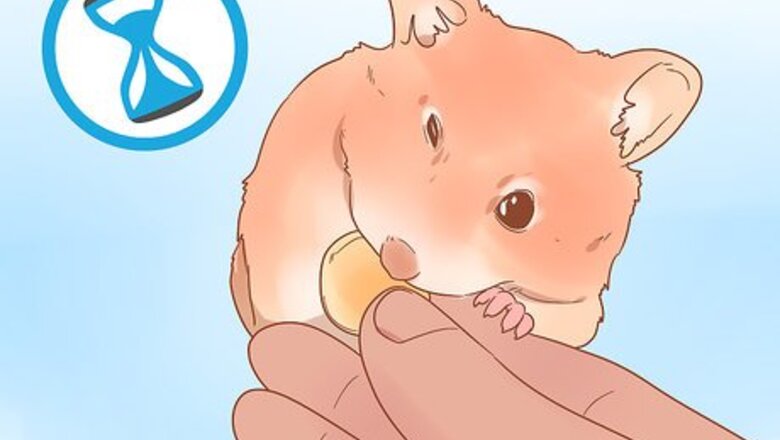
views
Restraining the Hamster
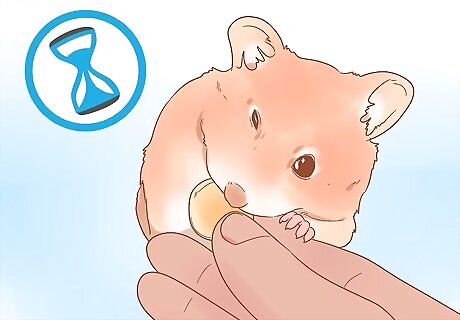
Wait for the right time to inspect the hamster. To determine sex, you are going to have to look at your hamster's hind end and underside. Your best bet is to wait until the hamster is alert and relaxed to examine it. Grabbing a sleeping or stressed hamster is a good way to get bitten. Try giving your hamster a treat and some attention. Hamsters don’t like being turned upside down (which is exactly what you’re going to do) so petting your hamster and making him or her feel at ease will help this process go smoothly.
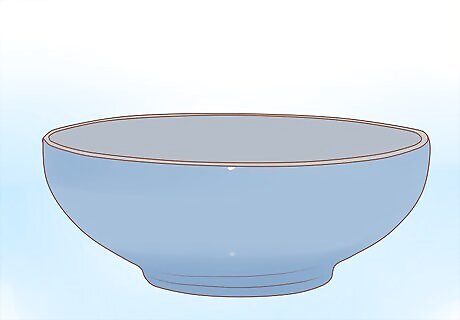
Consider working over a large bowl or box lined with a towel. This will give the hamster a soft place to land if it squirms away from you. It will also keep your hamster contained at the same time, making sure that it doesn't fall and then run away.
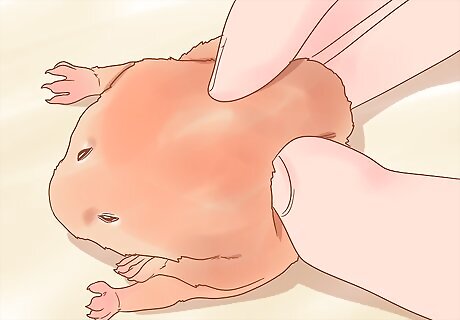
Scruff the hamster. To safely restrain the pet, approach the hamster calmly, and do not startle it. Place the palm of one hand over the hamster with your thumb and forefinger resting right above the shoulder blades. Gently grasp the loose skin just above the shoulders between your thumb and forefinger to control the head and keep the hamster from biting you. Do not pull on the skin or attempt to lift the animal by the scruff alone. Do not grip the scruff too tightly, either, as this can pull back the eyelids and causes the eyeballs to pop out of the sockets.

Pick up and turn over the hamster. Use the rest of the hand to support the animal's body. Using your free hand to support the weight of the hamster, lift the hamster and turn it over so that its body is resting in the palm of the hand you are using to scuff it. Its entire body should be supported at this point.
Looking for Sex Differences in Adults
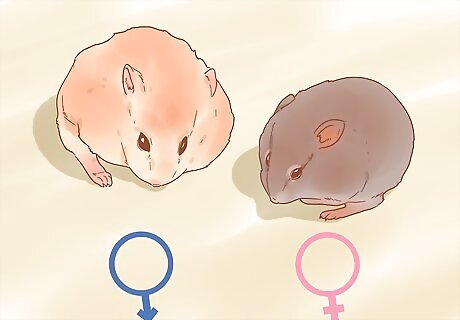
Assess the size of the hamster. Males are generally larger than females. If you don't have another hamster to compare with, this may not help you determine the sex of your hamster. However, if you have other hamsters, you can compare their sizes. While this is not a definitive test, it will give you a good idea whether your hamster is male or female. When you look at an older male hamster from above, you may notice that his back end is more pointed and hiked-up, whereas female hamsters have a rounded bottom.
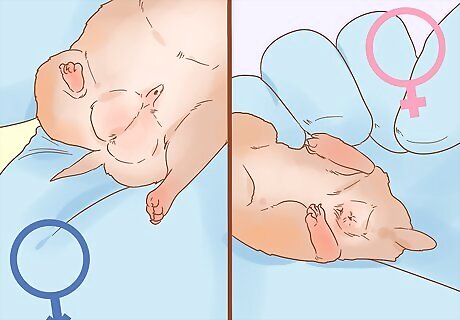
Look at the hamster's underside, near where the tail is located. Hamsters usually reach sexual maturity by around 35 days of age, and in adult hamsters, sex differences are often fairly easy to see. Males have prominent testicles that make their rumps bulge and take on an almond shape, while females have fairly blunt rear ends.

Examine your pet's abdomen for nipples, and assess the area just under the tail. If you see testicles, it is male. If you do not see testicles and can see prominent nipples, it is female. Females have six prominent pairs of nipples. In dwarf hamster species, the male also has a very prominent scent gland. In the mature male, this gland usually has a noticeable yellow color and is located in the umbilical area. This area is in the middle of the abdomen about where you would expect a belly button to be. If you cannot tell whether you have a male or female hamster, the animal may not be sexually mature yet.
Looking for Sex Differences in Immature Pups

Locate the two openings on the underside of the hamster. These usually look like small pink circles and may appear slightly raised around the edges. The anus is just under the tail, and the urogenital opening, the location of the urinary and genital organs, is above the anus toward the center of the abdomen.
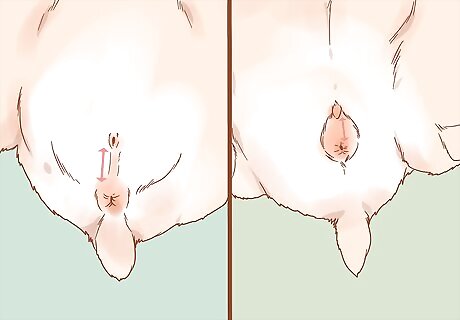
Assess the distance between the anus and the urogenital opening. Sex differences are more difficult to spot in very young pups, but it is possible to sex a pup by looking at the distance between its anus and its urogenital opening. In females, the openings are very close together. You may actually have trouble telling them apart so that the urogenital opening, which in this case is the vulva, and the anus almost seem to be a single opening or structure. In males, the openings are farther apart, so there is very clear separation between the anus and the urogenital opening. You may also see small swellings in the groin area if you have a male. These are the growing testicles.
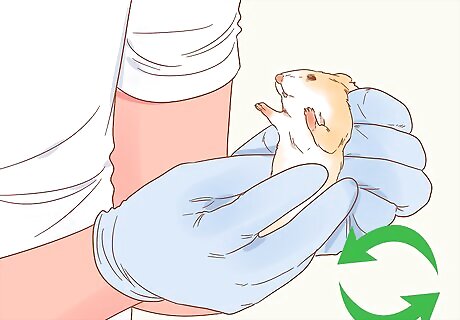
Recheck the hamster at another time if you are still not sure. If you can only find one opening, especially if it seems rather large, you should suspect you are dealing with a female, but recheck the animal often or consult an experienced exotics veterinarian just in case you missed the second opening. This opening can be subtle in a very young male, especially if the animal you are working with is a tiny dwarf hamster. The most common pet hamsters, Syrian hamsters, are solitary and need to be kept in individual cages, so early sexing is not very important. Dwarf hamsters, on the other hand, are kept in single-sex groups. If you have pups in a single-sex group, you need to recheck them often until sex is obvious. This will help you avoid accidental pregnancies in your group.


















Comments
0 comment